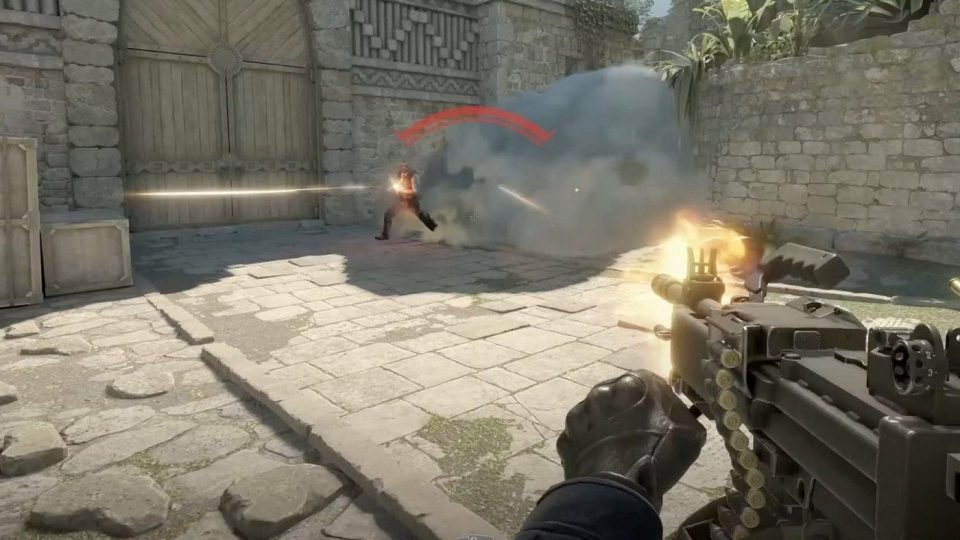Esports, once considered a niche hobby, has transformed into a global phenomenon with a massive fanbase and a burgeoning professional scene. Counter-Strike 2 (CS 2), a popular first-person shooter game, is a significant player in the world of esports. As the industry continues to evolve and expand, technology plays an indispensable role in shaping the future of CS 2 esports competitions.
Enhanced Gameplay Experience
One of the most noticeable ways technology is influencing CS 2 esports is through the enhancement of the gameplay experience. This begins with the game itself. CS 2 developers are constantly working on improving the graphics, mechanics, and overall gameplay to ensure it remains attractive to both players and viewers. The integration of advanced graphics engines and hardware optimizations results in more immersive and visually stunning gameplay.
Additionally, esports organizers utilize technology to introduce new viewing experiences. High-definition live streaming, virtual reality (VR), and augmented reality (AR) have opened up new dimensions for spectators. Fans can now watch CS 2 matches from various angles and perspectives, even virtually stepping into the shoes of their favorite players. This enhanced viewing experience keeps audiences engaged and excited.
Data Analytics and Performance Metrics
Technology also plays a pivotal role in gathering and analyzing data related to player performance. Advanced analytics tools help teams and players fine-tune their strategies. Metrics like kill-to-death ratios, headshot percentages, and movement heatmaps enable coaches and players to identify areas for improvement and create more effective gameplay strategies.
Moreover, data analysis has become an essential part of scouting talent in the world of CS 2 esports. Teams use statistics and performance metrics to identify promising players, facilitating the recruitment of new talent into the competitive scene. Technology has, therefore, become a tool for not only improving current players’ skills but also for discovering future stars.
Streaming and Content Creation
Esports has gone beyond just competitive matches; it’s now a form of entertainment. Technology has made it possible for professional players and content creators to broadcast their gameplay and engage with their fan base. Streaming platforms like Twitch and YouTube Gaming provide the infrastructure for players to showcase their skills, interact with fans, and monetize their content.
In addition to live streaming, technology aids content creation through video editing, special effects, and graphics enhancements. This allows esports professionals to produce high-quality content that keeps their audiences entertained and engaged between competitive matches. As a result, many CS 2 esports players have become influential online personalities, contributing to the growth of the game’s community.
Global Connectivity and Collaboration
The global nature of esports requires seamless connectivity and collaboration among players, teams, and fans worldwide. Technology has made it possible for players to compete in international tournaments without the need for physical presence. Online platforms for practice, collaboration, and competition provide an environment where players from different corners of the world can interact and compete in real time.
In addition, technology enables esports organizations to collaborate with sponsors and partners, further expanding the industry’s reach and financial potential. Through various online platforms and social media, the esports community can easily connect with both established and up-and-coming brands.
Future Possibilities
The influence of technology on CS 2 esports is far from reaching its peak. As technology continues to evolve, we can expect more exciting developments in the future. Some possibilities include:
- Enhanced Virtual Reality: The integration of VR into CS 2 gameplay could provide an entirely new level of immersion for players and spectators.
- Artificial Intelligence: AI-driven coaching and analysis tools may become more prevalent, offering precise insights into player performance.
- Improved Spectator Engagement: More interactive and engaging viewing experiences will likely emerge, blurring the line between traditional sports and esports.
In conclusion, technology is a driving force in shaping the future of CS 2 esports competitions. It enhances gameplay, provides valuable data for improvement, enables streaming and content creation, and connects players and fans worldwide. As technology continues to advance, the possibilities for the esports industry are limitless, ensuring that Counter-Strike 2 will remain a thrilling and dynamic part of the esports world for years to come.







